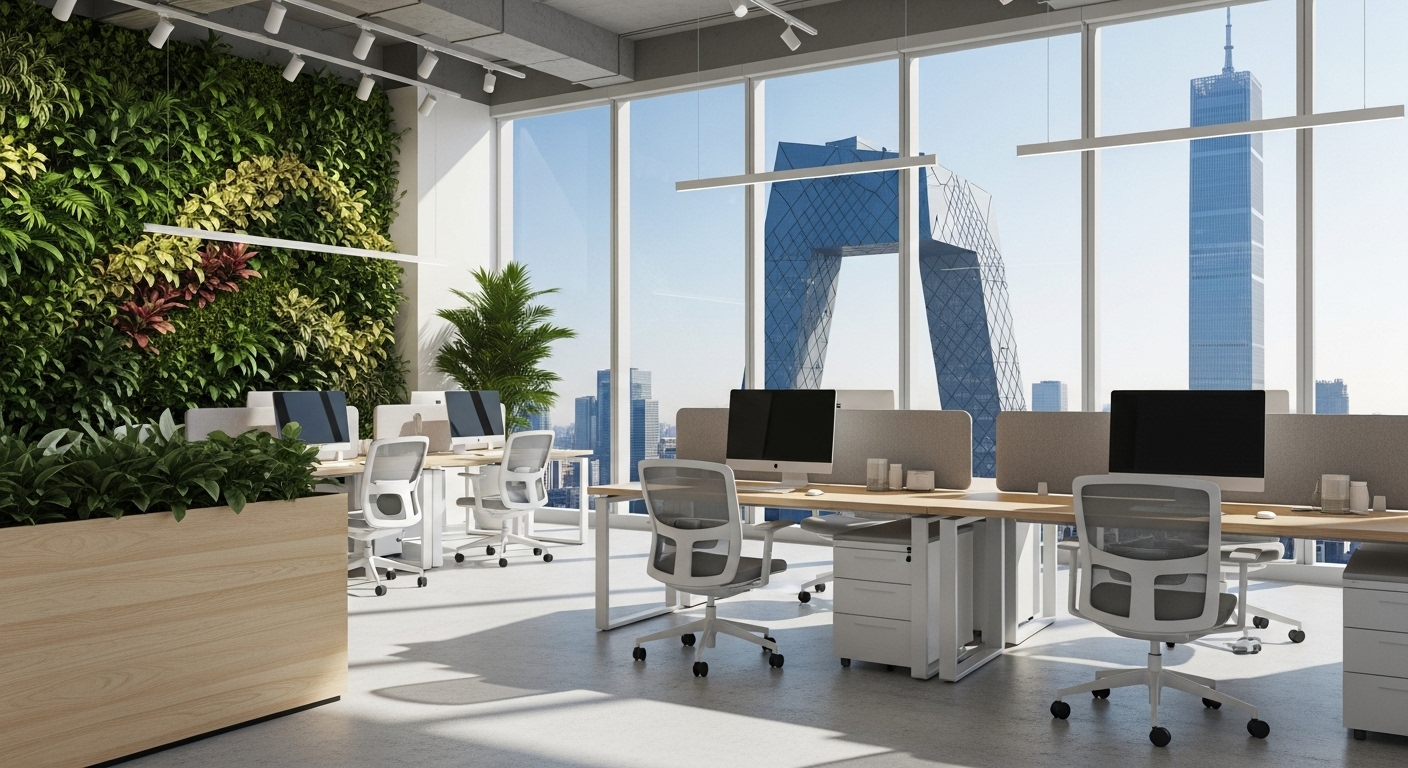In the post-pandemic business landscape, the question of ‘where we work’ has become a complex strategic decision. For companies navigating this new terrain, choosing a physical workspace is no longer about maximizing headcount per square foot; it’s about creating a destination that fosters culture, collaboration, and productivity. This challenge is particularly acute in a vibrant, high-stakes market like Toronto, where the right office can serve as a powerful magnet for top talent and a tangible symbol of a company’s brand and values. As businesses refine their hybrid models, the office has evolved from a daily requirement to a strategic asset. This guide provides a comprehensive framework for making that critical decision, moving beyond simple cost analysis to integrate the crucial pillars of business needs, financial realities, and the unique opportunities presented by the city’s diverse commercial landscape. We will explore how to define your true spatial requirements, navigate the financial complexities of the market, select a location that aligns with your talent pool, and future-proof your investment for long-term success.
1. Beyond the Blueprint: Defining Your True Workspace Needs
Before you even glance at a real estate listing, the most critical step is an internal audit of your company’s operational DNA. The ideal workspace is a physical extension of your culture, workflow, and strategic goals. Start by asking fundamental questions: What is the primary purpose of our office? Is it a hub for deep, focused work, a dynamic center for client-facing collaboration, or a flexible touchpoint for a primarily remote team? The answer will dictate everything from layout to location. Analyze your team’s work patterns. Do your departments require constant interaction, or do they thrive on uninterrupted quiet? A sales team might need open, energetic spaces with huddle rooms, while an engineering team might prioritize quiet zones and individual pods. It’s crucial to move beyond generic assumptions and gather real data through surveys and workshops with your employees. Consider your growth trajectory. Signing a five or ten-year lease requires foresight. A space that feels perfect for your current team of 30 could become a constraint in two years. Look for options with built-in flexibility, either through modular design or by choosing a building with options to expand. Finally, consider your brand identity. Your office is often the first physical impression you make on clients, partners, and potential hires. The design, aesthetic, and even the building’s architecture should tell your brand’s story and reinforce its core values—be it innovation, stability, creativity, or luxury.
2. The Financial Equation: Navigating Toronto’s Market Dynamics
Cost is invariably a top consideration, but a superficial analysis can be misleading. In a competitive market, a truly strategic financial assessment goes far beyond the base rent per square foot. The first step is to understand the total cost of occupancy. This includes the base rent plus Additional Rent or TMI (Taxes, Maintenance, and Insurance), which can add a significant percentage to your monthly expenses. You must also budget for one-time capital expenditures like fit-outs, furniture, IT infrastructure, and professional fees for lawyers and designers. When comparing options, evaluate the trade-offs between different models. A traditional long-term lease offers stability and customization but requires significant upfront capital and carries long-term liability. In contrast, flexible or coworking spaces offer agility, lower initial costs, and all-inclusive amenities, but may offer less privacy and control over branding. For many businesses in Toronto, a hybrid portfolio approach is emerging as a popular solution, combining a smaller core leased headquarters with flexible memberships at coworking spaces in different parts of the city to serve a distributed team. This allows companies to maintain a central cultural hub while providing employees with convenient, professional places to work closer to home. Dig deep into lease clauses for hidden costs related to restoration obligations at the end of the term, or annual rent escalations.
3. Location Decoded: Aligning with Talent, Transit, and Industry
The adage ‘location, location, location’ has never been more relevant, but its meaning has evolved. Today, the optimal location is at the intersection of talent accessibility, client convenience, and industry synergy. In a sprawling metropolis, a key factor is the employee commute. Analyze where your current and desired talent pool lives. A location that is easily accessible via multiple forms of public transit, like the TTC subway and GO Transit, will significantly broaden your ability to attract and retain the best people. Proximity to major highways is also a consideration for employees commuting from the suburbs. Consider the character of the neighborhood and its alignment with your company culture. The Financial District offers prestige and proximity to corporate partners, making it ideal for finance, law, and consulting firms. Conversely, vibrant areas like King West or Liberty Village are magnets for tech startups and creative agencies, offering a dynamic ecosystem of cafes, restaurants, and networking opportunities. Don’t overlook the client journey. If you frequently host clients, your office should be easy for them to find and access, with nearby amenities like hotels and fine dining. The right location can even provide a competitive advantage by placing you within an industry cluster, fostering organic networking and partnership opportunities that can accelerate growth.
4. The Hybrid Hub: Designing for Flexibility and Collaboration
The modern office is not a place where employees are tethered to a single desk from nine to five. It is a ‘hub’ in a ‘hub-and-spoke’ model, a central point for connection, collaboration, and culture-building that complements remote work. Designing for this reality requires a fundamental shift in layout philosophy. The focus moves from maximizing individual workstations to creating a diverse ecosystem of spaces. This includes open, reconfigurable areas for team-wide meetings, semi-private ‘huddle rooms’ for small group brainstorming, and fully enclosed, acoustically-sound pods for video conferencing and deep focus. Technology is the connective tissue of the hybrid hub. Seamless, high-speed Wi-Fi is non-negotiable. Conference rooms must be equipped with high-quality cameras, microphones, and displays to ensure that remote participants feel just as present as those in the room. Desk booking systems and smart office sensors can help manage space utilization efficiently, providing valuable data on how your team is actually using the office. The design must also prioritize employee well-being. Incorporating biophilic elements like natural light and plants, creating wellness rooms for meditation or quiet reflection, and offering ergonomic furniture are no longer perks but essential components of a productive and healthy environment for businesses across Toronto looking to entice their staff back to the office.
5. Amenities That Matter: The Flight to Quality
In a hybrid world where coming to the office is a choice, the workplace must offer something employees can’t get at home. This has fueled a ‘flight to quality,’ where companies are choosing better buildings, even if it means taking slightly less space. The amenities that truly move the needle are those that enhance convenience, well-being, and community. On-site fitness centers, high-quality coffee shops, and healthy food options within the building save employees valuable time and contribute to a better workday experience. Access to outdoor space, such as a rooftop terrace or a nearby park, provides a crucial place to decompress and recharge. Look beyond the building itself to the surrounding neighborhood. Is it a vibrant, walkable area with a variety of restaurants, shops, and services? A great location allows employees to run errands during their lunch break or socialize with colleagues after work, integrating work and life more seamlessly. Furthermore, consider the building’s management and technological infrastructure. Modern, Class-A buildings often offer advanced HVAC systems for better air quality, robust security features, and dedicated apps for booking amenities or communicating with property management. These elements create a frictionless, premium experience that makes the commute worthwhile and reinforces the value of the physical office.
6. The Due Diligence Checklist: Leaving No Stone Unturned
Once you’ve narrowed your options, a rigorous due diligence process is essential to avoid costly surprises. Your checklist should cover physical, legal, and financial aspects. Conduct multiple site visits at different times of the day to get a feel for the building’s atmosphere, noise levels, and elevator traffic. Bring your key decision-makers and a designer or architect to help visualize how your team would function in the space. Scrutinize the building’s infrastructure. Is the HVAC system modern and efficient? What is the quality and capacity of the internet connectivity? Engage a commercial real estate lawyer to perform a thorough review of the lease agreement. Pay close attention to clauses regarding subleasing, assignment, renewal options, rent escalations, and termination penalties. Understanding your rights and obligations is paramount. For any business making a significant investment in a city like Toronto, working with an experienced tenant representation broker is invaluable. They can provide market insights, identify off-market opportunities, and negotiate favorable terms on your behalf. Finally, talk to current tenants in the building. Their firsthand experiences with property management, building maintenance, and the overall environment can provide candid insights that you won’t find in a marketing brochure.
Conclusion: Your Workspace as a Strategic Asset
Choosing your workspace in the modern era is one of the most significant strategic decisions a leader can make. It is a long-term investment not just in real estate, but in your people, your culture, and your brand’s future. The process requires a holistic approach that moves beyond a simple search for square footage. It begins with a deep understanding of your own organization’s needs and workflows. It demands a sophisticated financial analysis that accounts for all costs, both immediate and hidden, and weighs the strategic trade-offs between leasing and flexible options. The right decision hinges on a nuanced understanding of location, viewed through the lens of talent attraction, employee experience, and brand alignment within the city’s diverse neighborhoods. The final choice must be a space that is not merely occupied, but actively leveraged—a flexible, amenity-rich, and technologically advanced hub that supports a hybrid workforce and makes the office a destination of choice. By thoughtfully navigating these critical factors, your workspace transforms from a line item on the balance sheet into a dynamic and powerful asset that drives collaboration, attracts top talent, and accelerates your business growth in the heart of a world-class city.





